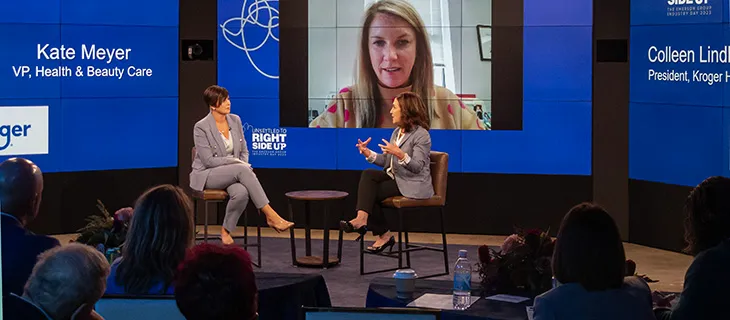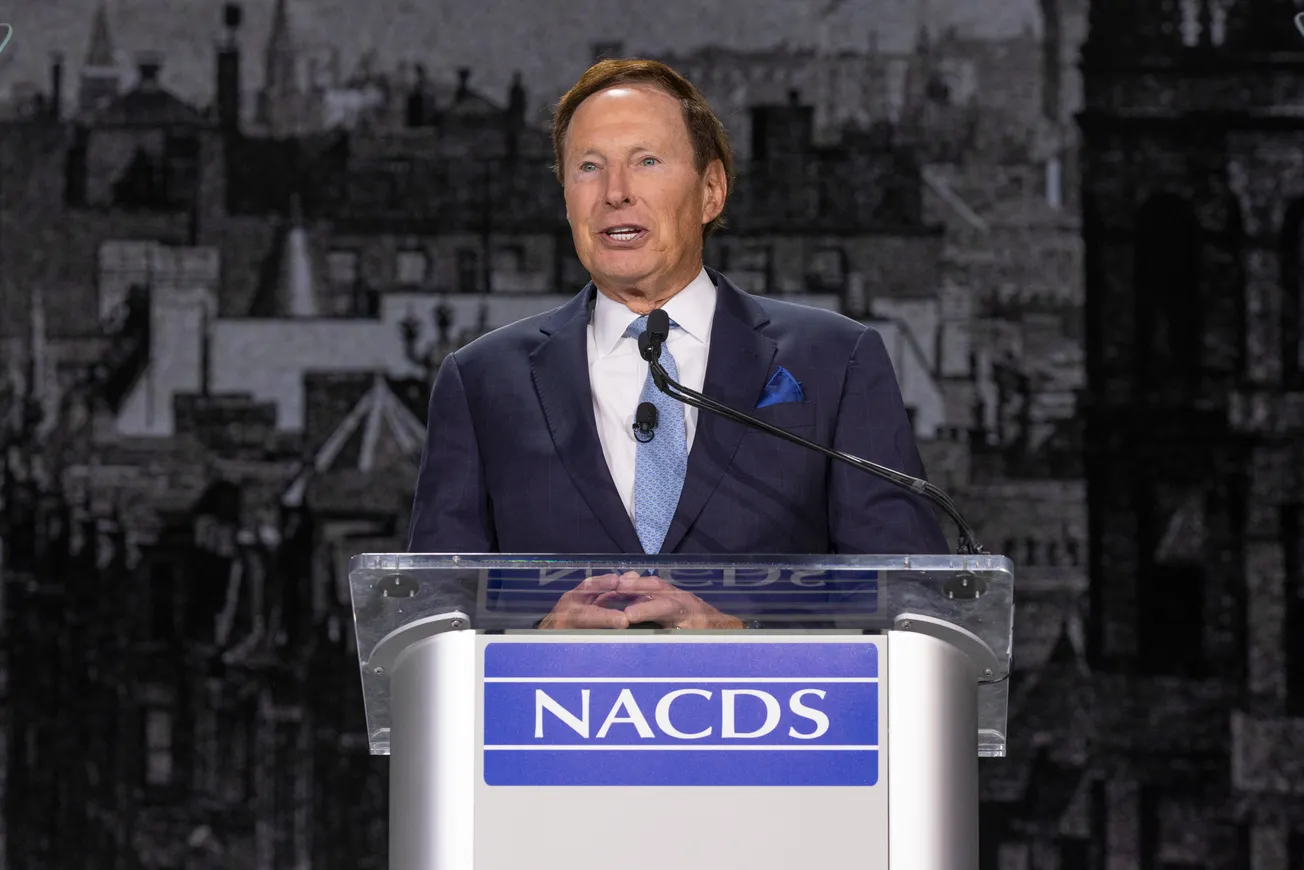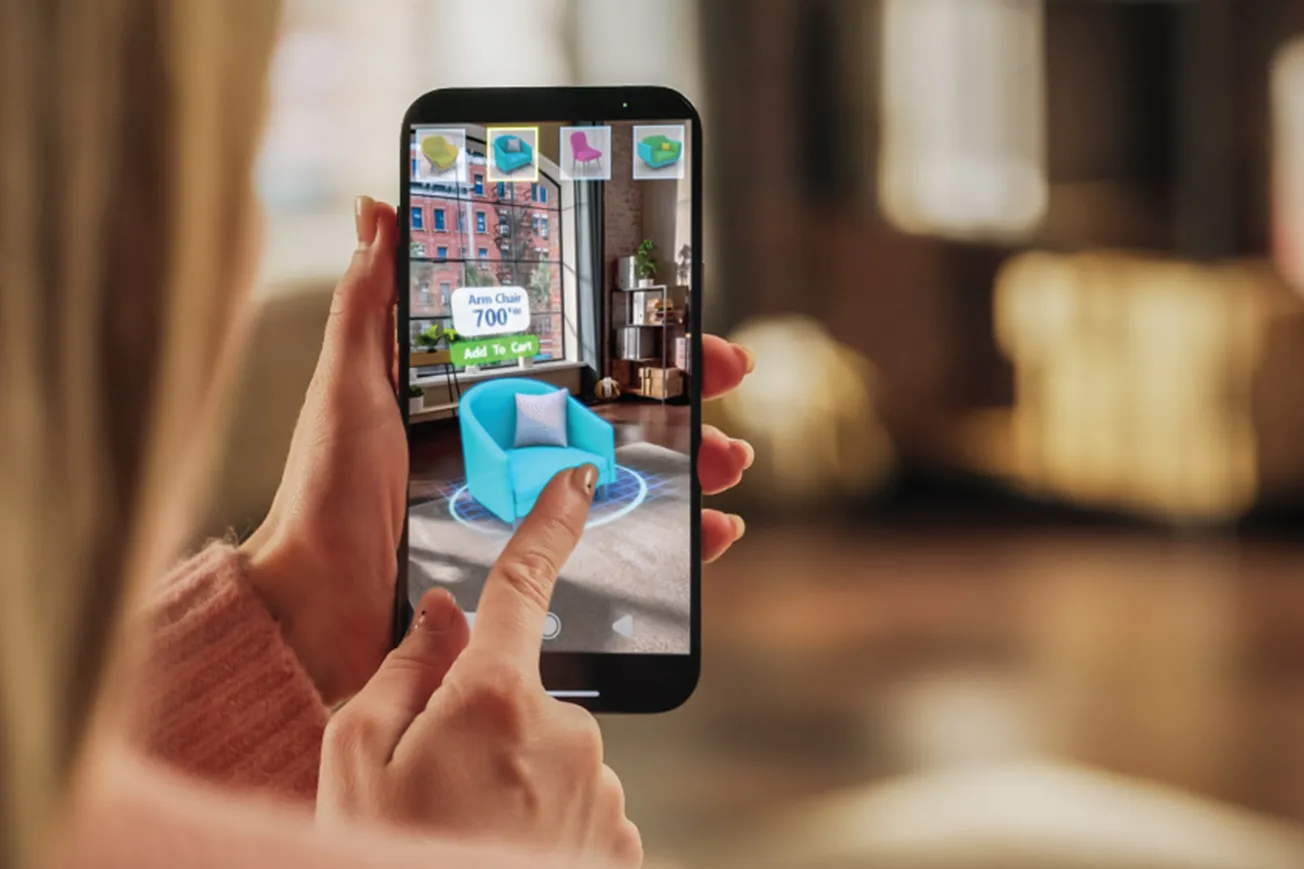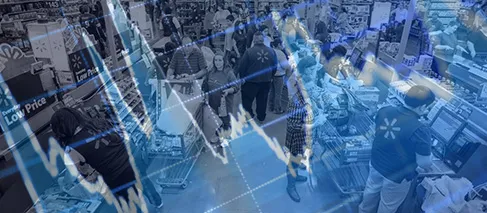AMBLER, Pa. — Two short spans of time — one just over 7 seconds and the other just under 15 minutes — were among the many talking points at The Emerson Group’s 2023 Industry Day last week. The day-long event brought together retailers and suppliers, brand innovators and other thought leaders to discuss the future of the industry and the opportunities and challenges that lie ahead.
Artificial Intelligence was one of the topics that came up again and again, and Justin Honaman, head of worldwide retail & consumer goods go-to-market at Amazon Web Services, demonstrated the power of generative AI by asking a version of that technology to compose a Country song reflecting this year’s Industry Day theme of “Unsettled to Right Side Up.”
The software came up with a complete song in about 7 seconds. After reading the first verse and chorus, Honaman acknowledged the song might not be a Grammy-winning effort, but it wasn’t too bad either.
“It’s not perfect,” Honaman said. “But seven seconds! And all I did was give it a prompt, a single question.”

Justin Honaman of Amazon Web Services
Honaman started his presentation by challenging his audience with the question, “What are you doing today so that you’re not obsolete tomorrow?” After highlighting the challenges companies face in technological advancements and the need for innovation, Honaman discussed the risks and opportunities associated with generative AI, and encouraged businesses to start looking for ways to learn about and employ the technology.
Scott Galloway, New York University Professor of Marketing at NYU Stern School of Business, also focused on the potential (and potential perils) of AI in his “What’s Next” presentation. He touched on possible negative side effects of AI, such as the spread of misinformation and the risk of harm to human relationships. But he also suggested that AI would have a deflationary effect on the economy, and had the potential to disrupt the healthcare industry in a good way. He also reassured — sort of — anyone in the audience worried that AI was going to cost them their livelihood.
“I just don’t buy the notion that AI is going to take your job,” Galloway said. “I think somebody who understands AI is going to take your job.”
Kshitij Kumar, the chief data officer at Haleon, addressed the same concern in his presentation, “Cracking the AI Code.”
“The question I keep getting asked most often is, is it AI versus humans?,” noted Kumar, who goes by KK. “Who’s going to win? Who’s going to lose? And this quote from Mustafa Suleyman came to my mind. He was the co-founder of DeepMind. And he said, ‘AI and humans together still beat just AI.’ That is the case in some games, chess and go, and I believe that’s the case in life and in business.”
KK said that businesses need to be aware of AI’s limitations, but pointed out that many businesses were already using the technology, and that there were many potential use cases relevant to the consumer space, including trend and sentiment analysis, fraud detection and prevention, visual search, shipping optimization, automated product tagging, predictive pricing, product recommendation, and supply chain management.

Sue Smith of The Emerson Group and Luke Rauch of Walgreens
Walgreens senior vice president and chief merchandising officer Luke Rauch, interviewed by The Emerson Group’s Sue Smith, talked about the potential for using AI to really personalize the shopping experience for Walgreens customers, using information gleaned from Walgreens’ loyalty program.
“We have over 110 million people in our loyalty program,” Rauch said. “So the access that we have to information, data, behaviors is really unprecedented. So for us, the biggest focus right now is how we do a better job using machine learning and AI to harness that information at our fingertips, to make it easier for consumers. So we know you bought something six months ago and you’re probably about out. How do we start to get more proactive?
“We’ve talked a lot in the past about personalization. And honestly, the first iteration of personalization is just curation. With the technology and tools that we have, we have an opportunity for true personalization. True one-to-one offers, so that the 25% off a certain brand of mascara that you get is different than any offer that anybody else gets. And the way we serve it to you is the way you like it to be served up. If you prefer SMS, then it comes by SMS. If you prefer email, it comes by email. If you prefer it to be on a printed receipt after your last transaction, then it comes on a printed receipt.”
Luke Rauch’s conversation covered a wide range of topics, from Walgreens’ focus on being a healthcare provider and serving local communities to the importance of improving the value proposition for customers and making shopping more convenient.
Winning in Omnichannel
Rauch also talked about how Walgreens has changed its e-commerce strategy, closing a direct-to-consumer distribution center in Illinois and switching to a hub and spoke system using its 9,000 stores as distribution hubs. And Rauch personally had a chance to try out the new approach when he and other members of his family had COVID, making a trip to his local Walgreens inadvisable.
“I needed some basic things,” Rauch recalled. “I needed hydration for the kids and some over-the-counter medicine, and I placed an order on the Walgreens app. And in 14 minutes and 47 seconds, from the time I pressed `submit’ to the time my doorbell rang, the products were on my front stoop. Fourteen minutes and 47 seconds.” Rauch noted that the ability to deliver products to consumers’ homes that fast is down to the fact that Walgreens has stores located within five miles of 80% of the population, which is a competitive advantage. “Nobody else can do that with that degree of speed.”
In a conversation with The Emerson Group president Ed Morgan, Walmart vice president of merchandising for wellness Vinima Shekhar detailed Walmart’s own plans to be the consumer’s first choice in digital shopping.
“Our customers don’t think of us as two different brands — in store versus online,” Shekhar said. “They want to engage with our neighborhood markets. They want the excitement of the Supercenter and they want the convenience of the store closest to them, which is the one in their pocket. And our single app experience is continuously improving. Earlier this year, I’m sure many of you saw, we completely revamped our homepage to make exploring our full assortment easier and more inspirational for our customers.
“The site is now set up just like our stores, which means it’s more seasonally relevant and it’s regionally merchandised. You may also notice the Walmart app has exciting AR-enabled technology that helps customers better visualize how items might look in real life, whether they’re shopping for furniture or fashion.
“We’re continuing to strengthen and expand our OPD (Online Pickup and Deliver) offering, which is a huge convenience driver for our customers, providing them with more options and more flexibility. This is really a huge differentiator for us, because we’re leveraging the proximity of our stores to fulfill and deliver digital orders. What’s exciting about this is that we’re combining the power of technology with our network of physical stores. We’re making the shopping experience seamless across all channels and continuing to adjust based on the changing needs of our customers.”
Food as Medicine
An afternoon session on “The Bridge Between Nutrition and Wellness” featured a video introduction by Kroger CEO Rodney McMullin, who spoke about the company’s commitment to helping customers live healthier lives by providing access to fresh food and healthcare.
“So many health problems facing America today can be mitigated or slowed by making minor adjustments to the way we eat. McMullen said. “Kroger is a gateway to helping hundreds of thousands of associates and millions of customers make healthier choices every day, we are committed to improving access to fresh food and healthcare, which is directly connected to our Zero Hunger, Zero Waste plan to end hunger in the communities we serve every day. We think it’s vital to provide customers with healthy food and the resources to transform that food into meals their families will love.”
In a discussion with The Emerson Group’s Jen Beatty, Kroger Health president Colleen Lindholz talked about the success of Kroger’s Zero Hunger, Zero Waste plan and how it has already met its goal to donate 3 billion meals by 2025. Lindholz also spoke about efforts Kroger has underway to really advance the “food as medicine” platform, including a plan to begin testing in-aisle changes at stores in the company’s Harris Teeter division. And Kate Meyer, VP of Kroger Health and Beauty Care brought up the importance of personalization and analytics in delivering healthcare and wellness solutions, and the role digital platforms can play in engaging with customers and providing education.
The Evolution of Convenience
In a session on “Redefining Retail Health & Wellness,” CVS senior vice president and chief merchant Musab Balbale explained that what consumers expect from a drug store is changing.
“The pharmacy channel has been built on convenience,” he said during a conversation with The Emerson Group’s Elizabeth Karvonen. “We have a drug store in the back that obviously generates a lot of traffic and revenue. But a lot of our purpose historically has been the convenient corner store market. In the last 5 to 7 years, and certainly over the next decade, that convenience premium has eroded. You can get products delivered to their house, increasingly, at faster speeds. So the role of convenience in retail is in question.”
Balbale explained that after looking at what consumers want from a drug today, CVS is focusing on three strategic pillars: Authority, Convenience, and Engagement (ACE). The company aims to differentiate its retail locations through engagement with customers, simplifying the shopping experience for convenience, and establishing authority in healthcare and wellness.
Global Supply Chain Productivity, and Regional Power
This year’s Industry Day wrapped up with insights from a global retail giant and two regional chains. In a conversation with Andrea Fallin of Strategy Concepts, Annie Walker, senior vice president of grocery merchandise operations at Walmart, talked about her 20-year career at Walmart, the changes she has seen in Bentonville, Ark., and within Walmart, and the role the company’s Women’s Officer Caucus has played in promoting the success of women at Walmart and creating a culture of belonging. She also talked about how the company’s strengths in logistics and the supply chain have helped the company respond to natural disasters —supporting its associates and communities in times of crisis — while also allowing it to help mitigate the impact of inflation on its customers.
“I always think about it in terms of the customer,” Walker said. “And I think it’s really important for our suppliers to always have a customer-first mentality. I’ve never had a customer stand at the register and say, can I please pay more for the pencil that I’m buying? Or can I please pay more for the gallon of milk? So our customers always need for us to be thinking about how we can continue to create value.”

Kinney Drugs’ John Marraffa, Wakefern’s Pat Mooney and The Emerson Group’s Jen Beatty
Kinney Drugs president John Marraffa and Wakefern Food Corp. vice president of health and Beauty Pat Mooney closed out the day with a discussion of the importance of community ties and partnerships in their respective regional businesses. Both companies prioritize philanthropy, offering products and services that meet the needs of their communities, and transparent communication with customers and employees. Regional players and an important role to play, and the two executives urged their supplier partners to recognize their value and their role.
“Know that we’re just as important as the big guys because I’ll tell you what, we’re the ones that are open every day,” Marraffa said. “We’re there for the communities. We show up when our communities need us. Our people are there, they’re rolling their sleeves up, they’re getting involved. And we need to be treated as the powerhouses that we are.”










